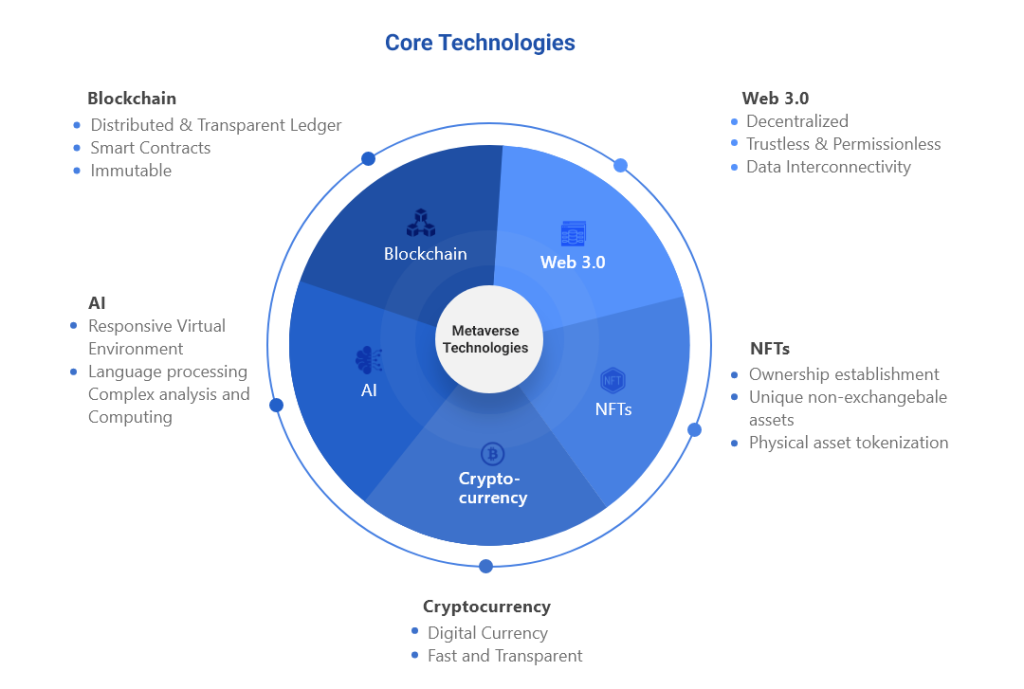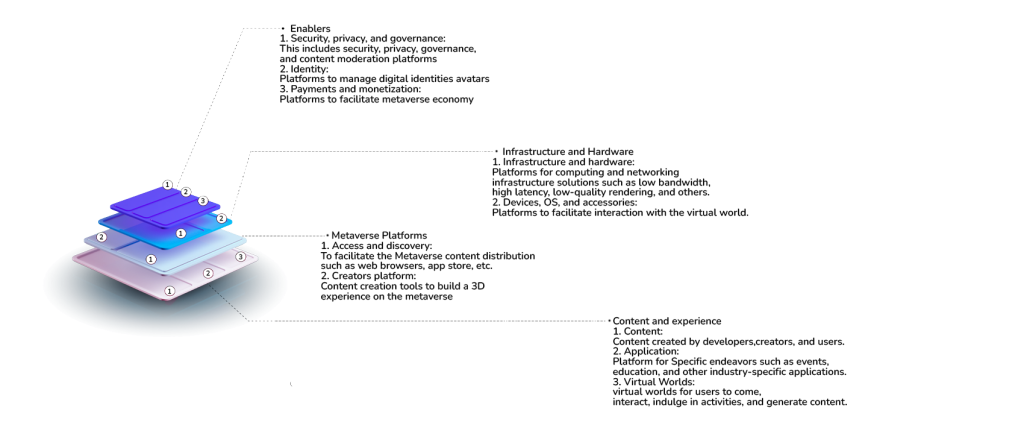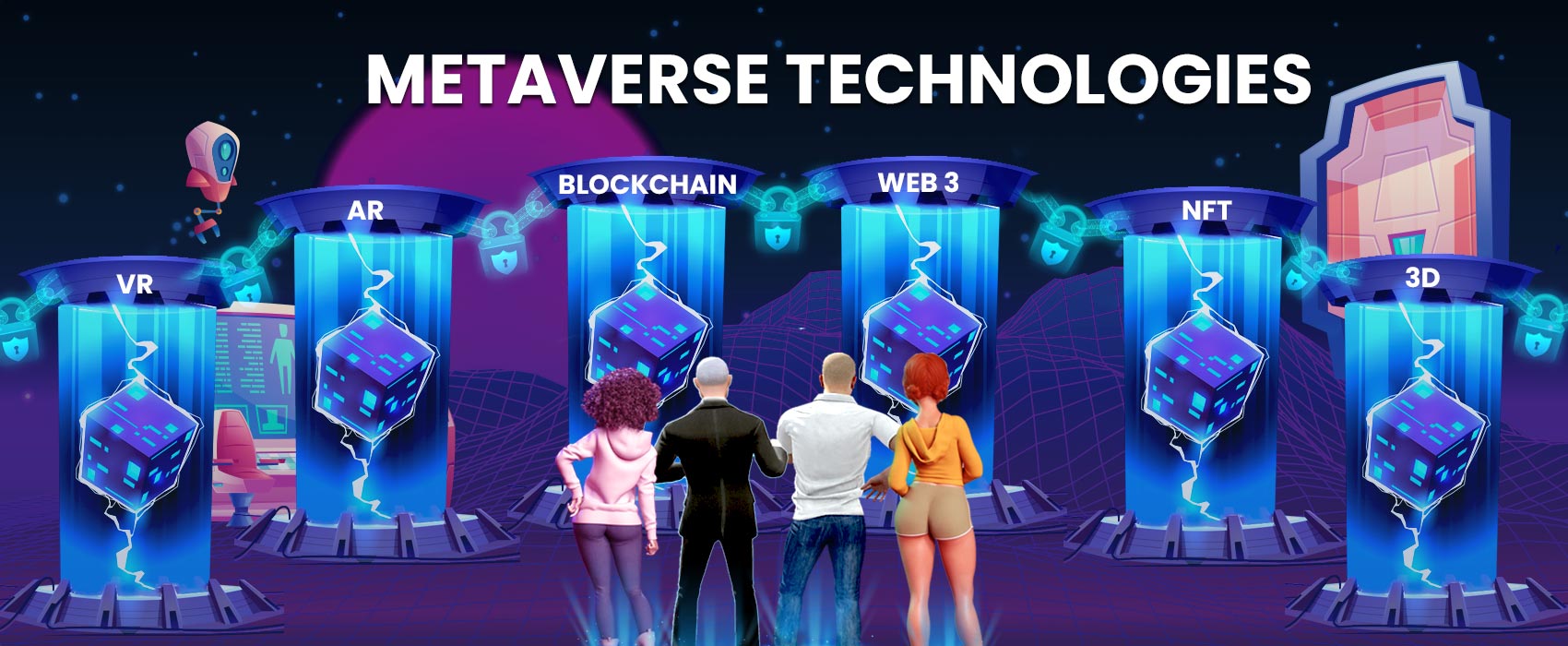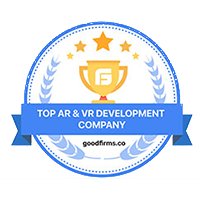A Brief History of the Metaverse
The concept of ‘Metaverse’ originated in the 1992 novel Snow Crash authored by Neal Stephenson. Known for writing speculative fiction, Stephenson pictured an engrossing virtual world where people can escape reality. Most interestingly, it was a completely different realm that people explored in their virtual 3D avatars.
The novel gave people a good taste of an alternate world where they were in charge. The reception was undoubtedly great and established Neal as a major science fiction writer of the 1990s. The novel was named one of Time magazine’s 100 Best English-Language Novels Written Since 1923.
Since then there have been various attempts to create a utopian alternate world. One of the famous attempts was “Second Life”, launched in 2003. It is an online platform where users can create their avatars and live an alternate digital life. They can do whatever they want such as hanging out in clubs, building social networks, and transacting in virtual items. Unfortunately, this virtual world failed to connect with the masses.
However, things started to pick up the pace in late 2021 with Facebook renaming itself ‘Meta’. It turned out to be a turning point for Metaverse Industry. The search interest for the term ‘Metaverse’ boomed in the last quarter of 2021. (see graph below). At one point in the period, it reached the peak popularity score of 100.

Further, while people were looking for a world to escape to, corporates were investing in technological innovations to make it a reality. In this blog, we will analyze these planet-transforming technologies and how they are contributing to making our life easier and better.
But before that, we need to understand what the Metaverse is. The Metaverse, we know today, is quite different from what people envisaged in the early days. For starters, it is not a single and universal space. Instead, it is a constellation of various small virtual spaces.
Second, these spaces may or may not be interoperable. So people may not hop from one virtual space to another. Nevertheless, the ultimate goal is still to create a universal virtual world enveloping all the current versions of Metaverse. So, let’s first start with what is Metaverse.
What is Metaverse?
The term ‘Metaverse’ is a combination of two words – ‘Meta’ and ‘Verse’. While Meta means ‘beyond’, ‘Verse’ refers to ‘Universe’. Combining the two, Metaverse is something beyond the universe. It is a three-dimensional computer-generated space where users can interact with other users as well as with the digital environment and its elements.
It is an immersive, shared and persistent environment. Immersive because it surrounds the users from all directions. Shared means that several users can access the space together in real-time. Persistence implies it remains operative even if the user has left and turned off the device. Learn more about the features of the Metaverse in detail here.
In this digital world, users can do anything. They carry out daily life activities such as personal and professional meetings and enjoy gaming and art. Or, they can undertake some major endeavors like developing infrastructure and organizing grand events and concerts. You name it and it is there. When we say that with Metaverse, possibilities are limitless, it is not just a figure of speech, it holds some ground. This takes us to our next segment, the potential of the Metaverse.
The Possibilities of the Metaverse
One of the world’s largest financial institutions, Citi, forecasted the Metaverse market to reach the $13 trillion mark by 2030. That’s a big-big number.
Another estimate by Grayscale puts the yearly opportunity for Metaverse at a trillion dollars. It will cover advertising, social commerce, digital events, hardware, and developer/creator monetization.
The potential of the Metaverse as a high-yielding resource can be gauged from Facebook’s renaming business move. In the words of Mark Zuckerburg:
“The metaverse is the next frontier in connecting people, just like social networking was when we got started… Over time, I hope we are seen as a metaverse company, and I want to anchor our work and our identity on what we’re building towards.”
Facebook is not alone, other tech giants have also joined the bandwagon marching to the world of fantasies. Read more about the Opportunities in Metaverse in our blog here.
The more tech giants get involved, the more innovations happen. This brings us to our main topic – the technologies powering the Metaverse.
Technological building blocks of the Metaverse
Metaverse sources its power from two groups of technologies. The first group can be termed the Core Technologies. These are the technologies that constitute the foundation and framework of the Metaverse. They allow the Metaverse and the experiences within to attain their unique features like decentralization, immutability, persistence, interoperability, and others.
On the other hand, the second group can be termed Immersion Technologies. These technologies make Metaverse what it craved for i.e. an immersive experience. They let people be present in a different world in a different avatar and fly along with their imaginations. The following is a detailed discussion of these technologies taking one at a time.
Core Metaverse Technology

Web 3.0
While Metaverse is being touted as the next evolutionary step of the internet. Web 3.0 is the next iteration of the world wide web. It incorporates ground-breaking concepts such as decentralization, distributed ledger technologies, and token-based economics.
In actuality, Web 3.0 is a set of internet protocols that makes sure that the data is not stored in a single physical place. Moreover, unlike Web 2.0, Web 3.0 ensures that there is no central authority calling the shots and there is no ‘Kill Switch’ to it. The user possesses ownership of their data and other digital assets.
You can understand it as the network of roads that connects different data storage for them to operate in tandem. Hence, it is the most basic metaverse technology that helps other technology function properly.
Blockchain
Blockchain is the next most important Metaverse technology after Web 3.0. Consider that if Web 3.0 is the road network, blockchain is the warehouse distributed across the network. The catch is that all these warehouses maintain the same inventory. Any item that is added to one warehouse should be added to all other warehouses on the network. More importantly, every single entry is accepted after a consensus is reached by all warehouses.
On the same lines, blockchain facilitates decentralized data storage. The data is stored in the form of blocks aligned one after the other. These blocks are shared with all the nodes on the internet to ensure transparency and uniformity. These nodes verify the block and add it to the existing chain. Once added to the chain, the block is immutable and the transaction cannot be reversed.
Blockchain is a powerful metaverse technology that brings a myriad of benefits to the Metaverse. While Web 3.0 offer the path towards decentralization, blockchain is the vehicle to traverse this path. Let’s understand how.
Safe storage
Blockchain is also known as Distributed Ledger Technology(DLT). It is lauded for its safe storage of records. Any information can be stored digitally in the blockchain.
Further, blockchain is a decentralized system i.e. the data is stored on all the participant nodes of the network. It utilizes unused hard disk space worldwide leading to a storage space that never runs out. This is one of the most crucial advantages that will make the Metaverse dream sustainable.
Moreover, decentralized storage also ensures the safety and security of the data. No third party can steal or manipulate a user’s data.
Transparency with due process
Blockchain brings transparency to the process. The data on a blockchain is visible to all the parties involved. Plus, it is 100% tamper-proof.
No information can be added unfairly without following due process. More importantly, once a block is added it cannot be removed, it remains there for eternity.
Smart Contracts
Blockchain facilitates automation through Smart Contracts. The aid in the creation, deployment, and execution of smart contracts. Smart contracts are computer programs stored on a blockchain. Their special feature is that they get automatically executed once the predefined conditions meet.
Hence, they make processes highly automated and predictable. This leads to higher trust between the parties and faster process executions.
Smart contracts will be a great tool for operating a Metaverse environment. It will respond automatically to the user’s activities for a more realistic experience.
Identity Authentication
Blockchain’s solid protection will aid in fool-proof identity management. The ledger technology would be the perfect tool to create, store and authenticate identities in the Metaverse. Hence, making this artificial world safer and more secure.
NFTs
Non-fungible Tokens (NFTs) will be a link that will connect physical objects in the real world to their corresponding virtual object in Metaverse.
NFTs are not a technology in themselves but they will form a significant part of the Metaverse. It is one of the two useful applications of the blockchain, the other is Cryptocurrencies.
Although NFTs have been majorly explored by artists and gamers, it goes much beyond that.
The reason, it can represent any object whether physical or digital through tokenization. This contributes to safer tracking of the object and stores the required related information such as ownership, transaction history, amount, etc.
Cryptocurrencies
With the robust backing of blockchain, Cryptocurrencies will form the basis of the Metaverse economy. After all, what is a metaverse without an economy?
All the activities in the Metaverse will be powered by these digital currencies. Cryptocurrencies will allow users to transact in this virtual world as well as the real world. Thereby, reinforcing the link established by the NFTs and making it seamless.
AI
Artificial Intelligence(AI) – the Metaverse technology that will breathe life into the virtual world. AI will have an immense impact in making Metaverse, It will make the virtual world as realistic and responsive as it can get.
The first and foremost application of AI in the metaverse will be to read and analyze complex real-world entities and turn them into computer-readable forms. This will cover human language processing including the non-verbal modes of communication. Similarly, it will read the physical features of humans and turn them into 3D digital representations aka Avatars.
Then, there will be an analysis of complex data and execute relevant computing. This will make the Metaverse environment more responsive to the users’ actions and make their experience ultra-realistic. Not to mention the creation and function of digital humans that will populate the digital world.
So, if you see AI acts as a transforming tool that converts the real world to the virtual world. Interestingly, it acts as both Core technologies and immersive technologies. On one hand, it handles the operations of the metaverse. On the other, it makes up for the immersive experience that we all are looking for.
Here is the technological stack needed for AI Development
- TensorFlow: An open-source library by Google for deep Learning applications development.
- AWS SageMaker: A cloud-based machine-learning platform to create, train, and deploy Machine Learning (ML) in its cloud.
- Scikit-Learn: a free software machine learning library to support Python programming languages. It is typically used for Machine Learning and Artificial Intelligence.
Technologies that make Metaverse Immersive
Virtual Reality
The VR Technology will offer a truly immersive experience to the users. It will place them in a 3D virtual environment where they can have a collective experience. This means that they can indulge in different activities along with their friends, family, and colleagues.
As technology evolves, Virtual Reality will also offer sensory experiences. So, people can even touch and feel the virtual object. They can perceive its actual shape and texture. Hence, VR will offer a completely lively experience.
You must be surprised to know that scent technologies are making great advancements. We already have that technology for users to even smell virtual objects.
Virtual Reality Technology is majorly utilized in two tools – Unity and Unreal.
- Unity – A development platform that facilitates cross-platform real-time events creation, 3D and 2D game creation, interactive simulations, and much more. However, its most important utility is Metaverse dApps development.
- Unreal Engine – It is an open-source development platform for advanced real-time 3D modeling and editing. It renders photorealistic graphics for immersive events. It can be used for a range of projects spanning from gaming to media & real estate.
Learn more about the comparison between Unity & Unreal platforms.
Augmented Reality
Augmented Reality is the technology that seamlessly stitches the interface of the real world and virtual world. It is an amazing technology that places virtual objects into our real world. The most interesting part is that users can manipulate virtual objects to operate things in the real world.
AR technology will extend the happenings of the Metaverse to our real world and make it an indistinguishable part of our lives.
The following tools can be used to create AR experiences –
- Google ARcore – An AR toolkit by Google. It offers features such as light estimation, environmental comprehension, and motion tracking.
- Vossle AR – An AR platform to create an AR experience instantly. Drag and drop functionality to create an experience with environmental scanning, light adjustment, AR workflow, location-based AR, and much more.
- ARToolKit – A free open-source computer tracking library to create AR applications hosted on Github. It offers automated camera alignment, compasses support to develop real-time applications, and multi-language support.
- Apple ARKit– ARKit by Apple. It can capture visuals, spatial, and motion data from the sensors in a supported device. It can also process the scene to put AR elements into it.
3D Reconstruction
A metaverse is a virtual world that digitally imitates the real world. Hence, the digital environment and the objects must have two imperative qualities. First, they should be immersive i.e they should surround the user from all sides. Second, they should be three-dimensional in space.
3D reconstruction technologies help in creating this world with both qualities. Moreover, the advancement in technologies yields a high-definition environment with photorealistic objects.
We can create any object from a small playing ball to massive infrastructures like sky-scrapping buildings. The most interesting part, these metaverse technologies add physics-obeying things.
Hence, the ball created through these technologies follows the rules of gravity per the weight assigned.
Let’s see what are these technologies
Unreal Engine
As discussed above, Unreal Engine is a public real-time 3D development platform. It is used to create highly compatible projects with interactive visuals. Unreal offers an array of Open toolsets, advanced real-time rendering, avant-garde animation tools, and much more.
Unity
Unity offers an exhaustive list of tools. It enables the creation of 3D models for AR & VR as well as the development of a complete ecosystem on it. Unity also boasts of a huge community and hence better assistance to professionals.
CRYENGINE
CRYENGINE is a 3D development tool for developers that also powers VR Development for a wide range of platforms. It can create spectacular visuals and realistic 3D models for VR apps.
It has in-built audio solutions for a more engaging experience.
Now that we have discussed the technologies, it is time to see where these fit in the metaverse charade.
How does Metaverse work?
Recently, Mckinsey & Company published a report titled Value creation in the metaverse. Therein they discussed four components of Metaverse

- Enablers,
- Infrastructure
- Platforms, and
- Content
Enablers lay the foundation for the complex Metaverse structure. They cover foundational aspects like governance, security, and privacy. They also facilitate the operation of the Metaverse economy. Core technologies i.e. Web 3.0, Blockchain, AI, Cryptocurrencies, and NFTs operate in this component.
Infrastructure component covers the hardware and software requirements for the Metaverse. Such as Devices, Operating Systems, Cloud, Semiconductors networks, accessories, etc.
Platforms & Tools facilitate the creation and deployment of Metaverse experiences. These are Web browsers, Dapps, App stores, Game engines, AI services, etc. Artificial Intelligence as well as immersive technologies like AR, VR, Unity, and Unreal operate in this component.
Content component is where developers, creators, and even users are active. They will create the content and experiences that will drive the Metaverse. Here, they can use immersive technologies like Unity, Unreal, Cryengine, TensorFlow, etc.
Further, the above-mentioned four components can be broken down into ten layers. Let’s have a glance over the layer.
Enablers consist of 3 layers:
- Payment & Monetization
- Facilitating the Metaverse economy.
- Storing and trading digital assets
- Other digital Transactions
- Identity
- Digital Identities management
- Avatar creation,
- Other safety measures and authentication
- Security, Privacy, and Governance
- User privacy protection
- Governance and other authority supervision
Infrastructure consist of two layers:
- Hardware
- Complex computing
- Networking infrastructure
- Devices, OS, & Accessories
- User Interfaces
- AR Devices
- VR Devices
Platforms consist of two layers:
- Access & Discovery
- Metaverse content distribution
- App stores
- Creators Platform
- Content creation
- Virtual environment development
The content component consists of three layers:
- Content
- Content Creation
- Experience development
- Application
- Industry-specific applications
- Dapps
- Virtual Worlds
- Metaverse spaces
- Metaverse activities
- Content deployment
We have covered the components of Metaverse & Enterprise Metaverse in a detailed blog here.
Metaverse Use Cases Developed by Queppelin
Global Office of a leading Advertising Agency on The Sandbox
Metaverse is a great platform to have a presence, reach out to prospects globally, and expand your network. This has a huge positive impact on revenue.
We developed a virtual office on The Sandbox for Pulse Advertising. They are one of the leading influencer marketing agencies globally. A quest for a metaverse presence led them to Queppelin.
We built a three-storied building on the LAND they purchased. Each story represented an office in a different country. As per their request, the interior of the Metaverse office resembled that of their real-world office.
Pulse Advertising aimed to use this Metaverse office for meetings, conferences, and other corporate events. People from around the world could come to their Metaverse office. At the same time, their employees could coordinate and collaborate from different locations.
Metaverse Game on The Sandbox Platform
Gaming experiences on The Sandbox are a great source to earn valuable cryptocurrencies. The Sandbox platform allows the trading of game-based NFTs on its NFT marketplace.
We developed a breath-taking third-person action-adventure game. Here, the protagonist traverses a labyrinth and fights demons made out of Lava. Anyone from across the globe can come and enjoy it.
This was showcase our expertise in developing Metaverse Games. These endeavors bring huge revenue to our clients.
Metaverse Theme Park on Decentraland
Queppelin developed a theme park on the browser-based 3D virtual world. It was an elaborate amusement park with attractions like a real amusement park.
It included a lighthouse at one end. There were many toy booths dispersed all over the park. There were varieties of rides and carousels that visitors found attractive. At the center, there was a giant Ferris wheel with colorful lights.
Some challenges to the virtual world
Privacy & Security
The major challenge that Metaverse faces is related to privacy and security.
On one hand, the privacy of the users has to be protected from data breaches. AR and VR devices with cameras can be exploited for invading privacy, stealing private data, and sharing with third-party.
On the other hand, there are issues like false identity creation. Persons with disguised avatars may inflict harm on other users and brands.
Hence technological advancements must strike the finest balance between privacy and security.
Adoption Hindrances
Certain challenges hinder the widespread adoption of the Metaverse.
First is the expensive cost of equipment. To have a complete metaverse experience, one needs at least AR/VR headsets and handheld devices like VR meta-haptic gloves. As of now, they are a little costly and everyone may not afford them.
Secondly, prolonged usage of metaverse devices led to many health conditions like nausea, motion sickness, and dizziness. Moreover, the weight of VR headsets causes head and neck strain and limits the sessions.
Social isolation and withdrawal from real life are other health issues throwing challenges to mainstream metaverse adoption.
Conclusion
We have made a long way and an even longer path awaits for us to enter the true immersive metaverse. The technologies have evolved and are continuously evolving to expand the use cases of the mesmerizing man-made world.
Even in these early days of the metaverse, metaverse platforms like Decentraland, The sandbox, Axie Infinity, and others have gained huge popularity. They have garnered a ton of positive responses from their millions of users, say fans. They stand as the epitome of the limitless potential that Metaverse enfolds in itself.
No doubt big brands have already started to explore this virtual world for them. If you too want to seize this opportunity, feel free to shake hands with us.






